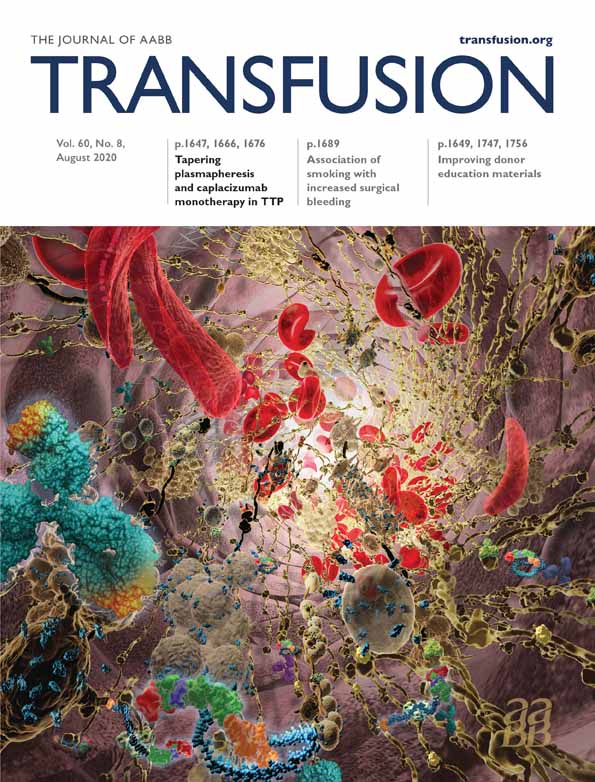Therapeutic plasma exchange taper does not decrease exacerbations in immune thrombotic thrombocytopenic purpura patients
A portion of this data was presented in abstract form at the 2018 American Society for Apheresis Annual Meeting in Chicago, IL.
Abstract
BACKGROUND
Despite rapid and intensive treatments with therapeutic plasma exchange (TPE) and immunosuppression, immune thrombotic thrombocytopenic purpura (TTP) patients are at risk of disease exacerbation, i.e., early recurrence of TTP within 30 days of achieving treatment response. TPE taper, a practice of performing additional TPE procedures after achieving treatment response, is commonly performed for decreasing exacerbations, although no evidence supports this practice.
STUDY DESIGN AND METHODS
In this prospective observational investigation over four years, our center switched its standard of care for treating all TTP patients from not performing TPE taper after achieving treatment response (i.e., no-taper cohort) to performance of TPE taper (i.e., yes-taper cohort) to characterize impacts on exacerbations. Continuous and categorical data were analyzed by Mann–Whitney, Fisher's exact, and log-rank tests; significance was defined as p < 0.05.
RESULTS
The two cohorts were well matched and had no significant differences in demographics, presentation laboratory values, or TTP history (p > 0.05 for all). The yes-taper cohort of 26 patients with 29 consecutive episodes did not have a significantly different exacerbation rate from the no-taper cohort of 24 patients with 27 consecutive episodes (exacerbation rates of 37.9% vs. 33.3%, respectively; p = 0.78); however, treatment-related complications directly attributed to the TPE procedures, blood products, or central venous catheters were significantly greater in the yes-taper cohort (nine vs. one events, respectively; p = 0.01).
CONCLUSION
Since TPE taper did not reduce exacerbations in our TTP patients, we no longer advocate for TPE taper and have reverted to our original standard of care.
CONFLICT OF INTEREST
JSR and MAM are consultants for and on the medical advisory board of Sanofi Genzyme's caplacizumab-yhdp. The other authors have disclosed no conflicts of interest.




